#UNDERRATED RELATIONSHIP/PARTNERSHIP/FRIENDSHIP MEME
Explore tagged Tumblr posts
Photo








UNDERRATED RELATIONSHIP/PARTNERSHIP/FRIENDSHIP MEME 5/?: @disneyprincessbuffyannesummers‘ pick: Elizabeth of York & Henry VII
Though founded on pragmatism, Henry and Elizabeth’s marriage had nevertheless blossomed throughout the uncertainty and upheaval of the previous eighteen years. This was a marriage of ‘faithful love’, of mutual attraction, affection and respect, from which the king seems to have drawn great strength – indeed, it was the kind of marriage that their second son, Prince Henry, would spend his whole life trying to find. With Elizabeth’s burial, the lights went out all over Henry VII’s court.
- Thomas Penn, Winter King: The Dawn of Tudor England
The interactions between Elizabeth and Henry bespeak a mutual affection and respect, with the king deferring to Elizabeth’s wishes at times. A letter from Pope Alexander to the king’s mother, for instance, states that Henry had promised the queen to appoint her candidate as the next bishop of Worcester (a deference to the queen’s wishes that Malcolm Underwood, a modern historian, finds “something of a surprise”). Further evidence of Henry’s affection for Elizabeth can be teased out of extracts recorded from his Privy Purse expenditures between 1491 and 1505. Contrary to Francis Bacon’s claim that Henry “showed himself no very indulgent husband towards [Elizabeth] though she was beautiful, gentle, and fruitful,” the king’s Privy Purse accounts reveal a generous, thoughtful, and fun-loving husband and father.
- Arlene Okerlund, Elizabeth of York
#UNDERRATED RELATIONSHIP/PARTNERSHIP/FRIENDSHIP MEME#perioddramaedit#historyedit#women in history#men in history#elizabeth of york#henry vii#the white princess#the spanish princess#jodie comer#jacob collins levy#alexandra moen#elliot cowan
1K notes
·
View notes
Note
destiny for the gen ask!
My favorite parent-child relationship
Henriette and Adeline/Ada-1 is extremely sad but also very interesting. Actually, the whole Black Armory crew's family dynamic is fascinating. Some people say there are no new ideas in fiction but I'm pretty sure "three female weaponsmith doomsday preppers raise child on precipice of apocalypse" has never been done before.
My favorite sibling relationship The Osmium / Hive God siblings and whatever fucked up thing they've got going.
My favorite family relationship (other) This might be a bit abstract but since I interpret it as something approaching a platonic life-partnership: ghosts and guardians in general, The Guardian and Ghost in particular.
My favorite friendship between two people Eris and Asher. You know the meme of the Cat in the Hat behind the kid with the baseball bat? Yeah, that's the writers and my emotions about this friendship. Literally every aspect of it makes my heart hurt in the most painful and best possible way.
Variks and Petra is *chefs kiss* too. I just like sad mixed-gender broTPs, don't judge me.
My favorite friendship between a group Hmm probably The Vanguard? Ikora and Zavala (and Cayde, when he was around) have an underrated dynamic IMO.
This is a bit more fanon-driven, but the First Crota Fireteam, too. :(
My favorite mentorship Played straight: Osiris and Ikora!
More abstractly, I like the Guardian and Shin Malphur. Maybe I'm being Hunter On Main and reading too much into this, but he always came across as a weary, wise mentor talking to their student before they undertake an incredibly dangerous mission, and it’s always stuck with me
My favorite rivalry Drifter and Shin Malphur is iconique.
Osiris and Toland, too, even if it’s only informed by a few lines.
My favorite hatred/antipathy Mara and Oryx. Two ascendant crazy-asses matched in hell the sea of screams... good for them.
My favorite potential relationship between characters who never talk in canon Eris and Crow! Would-be hive-deicide-committing hunter buddies! I know there's still time for this to happen though.
13 notes
·
View notes
Photo





UNDERRATED RELATIONSHIP/PARTNERSHIP/FRIENDSHIP MEME 6/?: @fierce-little-miana‘s pick: Chabi Khatun & Kublai Khan
It comes as no surprise that the Qonggirat consort star shone as brightly in China as it did everywhere else. The origin of the family dominance can be traced to the singular personality of Chabi, a niece of Börte, who married Sorqoqtani's son Qubilai (r. 1240-94), and became head of a wifely camp. Since we know more about Chabi than other imperial women, we can use her example as a window into the ways that imperial wives shaped events. Chabi was not Qubilai's first wife, whose identity is unclear. She was either a woman of unknown family named Tegülün, or a Merkit named Qoruqchin. Significantly, Tegülün / Qoruqchin is said to have lost her status later during her marriage, despite having born a son, which should have cemented her authority and position. This fits Chabi's story: she became Qubilai's most beloved and favored wife, so if a senior woman did lose her status, it would have been to her. Chabi married Qubilai before 1240, in which year their first son, Dorji, was born. This suggests that Chabi's own birth was perhaps in the mid-1220s, which would make her fifteen or sixteen by 1240, and which would accord with preferred marriage ages. Chabi successfully proved her worth as a royal mother by giving birth to four princes with Qubilai (including the one later imprisoned in Jochid lands). One historical source claims that Chabi also had five daughters for a total of nine children, but the daughters' names are unrecorded, and their number cannot be verified elsewhere. To seal Chabi's success and maintain the supremacy of the Qonggirat consorts, only her sons became contenders for succession. As for Chabi's many activities and the light they shine on the position of a royal wife: she was credited with possessing political savoir faire, since it was she who sent Qubilai timely warnings as he and his brother Ariq Böke descended into civil war. She made her mark on religion: she was devoted to Tibetan Buddhism, enjoyed a close relationship with the influential Phags-pa Lama, and is likely to have helped shape Qubilai's own favor for that form of worship. Chabi lobbied on questions of government policy, whether by opposing the exploitation of farmers in Northern China or promoting gentle treatment of the Song royal women after their capture in 1279, a responsibility that she oversaw personally after intervening successfully on their behalf. Her influence extended to culture, where she patronized important artists like the Nepalese A-ni-ko, and to material culture, whether fashion, the design of uniforms and war materiel, or the frugal refuse of fabrics at court. Before her demise in 1281 when she was perhaps in her fifties, she chose her own successor for Qubilai, a Qonggirat relative named Nambi. But Chabi's death struck a crushing blow to the Grand Khan, as did that of her second son, Crown Prince Jingim, who died four years later in 1285. Qubilai failed to recover from these devastating personal and dynastic losses and tried to escape into drink, much like his uncle Grand Khan Ögedei, whose alcoholism worsened significantly after the untimely death of his own heir.
- Anne F. Broadbridge, Women and the Making of the Mongol Empire
The death of Chabi, whom the emperor had prized more than any of his other wives, in 1281 left Khubilai wretched and alone. Her son Chen-chin had been named Crown Prince. She was the only one of Khubilai's wives to be accorded a memorial tablet in his temple. She had been an indispensable helpmate in the early years of his reign. It may be pure coincidence, but there is no doubt that after her death Khubilai personally, and China as a whole, suffered a series of drastic reversals. Perhaps Chabi could not have prevented these calamities, but she might have served as a restraining influence on some of the more outlandish decisions made during that period.
- Morris Rossabi, Khubilai Khan: His Life and Times
#UNDERRATED RELATIONSHIP/PARTNERSHIP/FRIENDSHIP MEME#perioddramaedit#historyedit#women in history#men in history#chabi khatun#kublai khan#marco polo#joan chen#benedict wong
673 notes
·
View notes
Photo

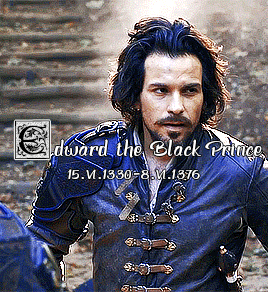
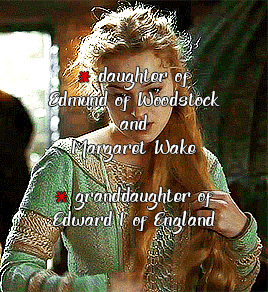





UNDERRATED RELATIONSHIP/PARTNERSHIP/FRIENDSHIP MEME 2/?: my choice: Joan of Kent & Edward the Black Prince
Prince Edward had only returned to England from the Rheims campaign in France in November 1360, just a few weeks before Thomas Holand died at the end of December, and yet by the spring of 1361, barely three months later, the prince had not only persuaded Joan to marry him but had also secured his father’s approval for their marriage. There is no doubt that the prince’s affections were deeply engaged. Froissart and Chandos Herald, both contemporaries who knew the prince and Joan personally, record the prince’s great love for Joan, the latter succinctly stating that ‘he loved her greatly’. His fondness for his cousin was long-standing, as is evident from the gift noted in his accounts in 1348 where she is described in affectionate terms as ‘Jeanette’, and the strength of his love is evident from the letter he wrote to her in 1367 after six years of marriage, addressing her as ‘my dearest and truest sweetheart and well beloved companion’. It is much more difficult to determine Joan’s feelings for the prince. Her love for Thomas Holand was apparent throughout their relationship from her steadfast loyalty and commitment to him, and his early death was a real tragedy for Joan. It is hard to imagine that she felt as strongly about the prince within a few weeks of Thomas’ death. It is far more likely that she was genuinely fond of her cousin, even loved him, but was not in love with him. Joan did not have to marry the prince. Her independent wealth and her widowed status gave her a choice in deciding her own future in a way she had not had before, and the prince could not have coerced her into agreement. The long wrangle over her marriage to Thomas Holand had shown that she was not ambitious and there is no evidence that she became either forceful or calculating during their marriage.
- Penny Lawne, Joan of Kent: The First Princess of Wales
On his arrival at Bordeaux he was received with solemn processions, the priests coming out to meet him, bearing crosses. The princess followed, with her eldest son Edward, then three years old, surrounded by her ladies and knights. They were full of joy at meeting one another again, and embraced most tenderly, and then walked together hand in hand to their abode.
- Louise Creighton, Life of Edward, the Black Prince, Illustrated with pictures and Maps
#UNDERRATED RELATIONSHIP/PARTNERSHIP/FRIENDSHIP MEME#historyedit#perioddramaedit#women in history#men in history#joan of kent#edward the black prince
330 notes
·
View notes
Photo








UNDERRATED RELATIONSHIP/PARTNERSHIP/FRIENDSHIP MEME 1/?: my choice: Isabella I of Castile & Ferdinand II of Aragon
Catherine’s parents, Ferdinand and Isabella, were the most remarkable royal couple of the age. They were both sovereigns in their own right: Isabella of Castile, Ferdinand of Aragon. Castile formed the larger, western part of what we now call Spain, stretching from the Bay of Biscay in the north to the marches of the Islamic kingdom of Granada to the south. It was a country of torrid, sunburned mountains and castles and high plains roamed by vast flocks of sheep. The territories of Aragon lay to the east. They were smaller, but richer and greener, encompassing the foothills of the Pyrenees, the fertile valleys of the Mediterranean coast and the great trading city of Barcelona. The traditions of the two kingdoms were as distinct as their landscapes. Castile was insular, aristocratic and obsessed with the crusade against the Moors in which lay its origin and continuing raison d’être. Aragon, in contrast, was an open, mercantile society: it looked north, across the Pyrenees towards France, and east, across the Mediterranean towards Italy. To a striking extent, the two sovereigns embodied the different characteristics of their realms. Isabella was intense, single-minded and ardently Catholic, while Ferdinand was a devious and subtle schemer. But he was much more: a fine soldier, who won more battles, both in person and by his generals, than any other contemporary ruler; a strategist, with a vision that was European in scale and grandeur; and a realist, who had the wit not to let his numerous successes go to his head. Understandably, Machiavelli worshipped him as the most successful contemporary practitioner of the sort of power politics he himself recommended: ‘From being a weak king he has become the most famous and glorious king in Christendom. And if his achievements are examined, they will all be found to be very remarkable, and some of them quite extraordinary.’They married in 1469, he aged seventeen, she a year or so older. Immediately Isabella was disinherited by her brother, Henry IV of Castile, in favour of his doubtfully legitimate daughter, Joanna. After the death of Henry IV in 1474, a civil war broke out between niece and aunt. This resulted in Isabella’s victory and proclamation as Queen of Castile, and Joanna’s retreat into a nunnery. Five years later, Ferdinand succeeded his father in Aragon. Ferdinand was the son of John II by his second marriage, and only after two deaths, both rumoured to be by poison, was he delivered the throne. Having fought everybody else to a standstill, Ferdinand and Isabella then threatened to come to blows themselves. He was determined to be King indeed in Castile; she was equally resolute to preserve her rights as Queen Regnant. Finally their quarrel was submitted to formal arbitration. This established the principle of co-sovereignty between the two. Justice was executed jointly when they were together and independently if they were apart. Both their heads appeared on the coinage and both their signatures on royal charters, while the seals included the arms of both Castile and Aragon. And these were quartered, as a gesture of equality, rather than Ferdinand’s arms of Aragon ‘impaling’ Isabella’s arms of Castile, as was usual between husband and wife. Such power-couple equality was unusual enough in a medieval royal marriage. But, in fact, Isabella was the first among equals since, with the exception of the agreed areas of joint sovereignty, the administration of Castile was reserved to her in her own right. Not surprisingly, Ferdinand jibbed. But he soon submitted and, united, the pair carried all before them. For, despite Ferdinand’s four bastards by as many different mothers, he and his wife were genuinely, even passionately, in love. But even in this there was rivalry. ‘My Lady,’ one of Ferdinand’s letters to the Queen begins, ‘now it is clear which of us two loves best.’ But they were in love with their growing power even more than with each other.
- David Starkey, Six Wives: The Queens of Henry VIII
The reign of Ferdinand and Isabella was called by Prescott ‘the most glorious epoch in the annals’ of Spain. Generations of Spaniards, contrasting their own times with those of the Catholic Kings, would look back upon them as the golden age of Castile. The conquest of Granada, the discovery of America, and the triumphant emergence of Spain on to the European political stage lent unparalleled lustre to the new State created by the Union of the Crowns, and set the seal of success on the political, religious, and economic reforms of the royal couple. Against the conventional picture of a glorious spring-time under Ferdinand and Isabella, too soon to be turned to winter by the folly of their successors, there must, however, be set some of the less happy features of their reign. They had united two Crowns, but had not even tentatively embarked on the much more arduous task of uniting two peoples. They had destroyed the political power of the great nobility, but left its economic and social influence untouched. They had reorganized the Castilian economy, but at the price of reinforcing the system of latifundios and the predominance of grazing over tillage. They had introduced into Castile certain Aragonese economic institutions, monopolistic in spirit, while failing to bring the Castilian and Aragonese economies any closer together. They had restored order in Castile, but in the process had overthrown the fragile barriers that stood in the way of absolutism. They had reformed the Church, but set up the Inquisition. And they had expelled one of the most dynamic and resourceful sections of the community – the Jews. All this must darken a picture that is often painted excessively bright. Yet nothing can alter the fact that Ferdinand and Isabella created Spain; that in their reign it acquired both an international existence and – under the impulse given by the creative exuberance of the Castilians and the organizing capacity of the Aragonese – the beginnings of a corporate identity. Out of their long experience, the Aragonese could provide the administrative methods which would give the new monarchy an institutional form. The Castilians, for their part, were to provide the dynamism which would impel the new State forward; and it was this dynamism which gave the Spain of Ferdinand and Isabella its distinguishing character.
- J. H. Elliott, Imperial Spain 1469-1716
This pairing may come as a surprise, given Isabella and Ferdinand are well known, but does it mean they're appreciated? In my opinion, they are not. In spite of their relative fame, my enormous effort to spread the knowledge about them, their reign, and their dynasty, a few here know how to appreciate their dynamics.
AN: Since I don't know all the relationships/partnerships/friendships in history, any suggestions are welcomed, give me your suggestion or your request, and I will gladly do research, and then make a post. Suggestions concerning source material are welcomed as well.
#UNDERRATED RELATIONSHIP/PARTNERSHIP/FRIENDSHIP MEME#historyedit#perioddramaedit#women in history#men in history#couples in history#isabella i of castile#ferdinand ii of aragon#isabel tve#multiple episodes#michelle jenner#rodolfo sancho
276 notes
·
View notes
Photo


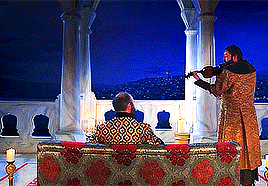





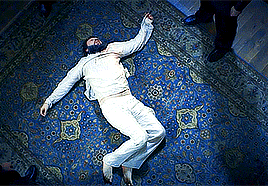

UNDERRATED RELATIONSHIP/PARTNERSHIP/FRIENDSHIP MEME 4/?: @mihrunnisasultans‘ pick: Süleyman the Magnificent & İbrahim Pasha
Among all the colorful public personalities gracing the Süleymanic era (1520–1566), Ibrahim Pasha, known as “∞makbul [favorite] and maktul [executed],∞” stands out as a particularly intriguing figure. In 1523 this childhood friend, favorite, and slave of Sultan Süleyman was most irregularly promoted to the highest office in the empire, the grand vizierate, directly from the sultan’s personal service, without having had any experience in government. For the following thirteen years, with the enormous power and authority that he assumed, Grand Vizier Ibrahim Pasha ruled the empire like a second sultan. As the sultan’s chief advisor and commander, Ibrahim Pasha not only was single-handedly in charge of the political and military administration of the empire but also acted as the sultan’s alter ego and absolute representative in public. In this way Ibrahim Pasha played a pivotal role in the promotion of the Ottoman sultan’s image as the world ruler and in the consolidation of Ottoman claims to universal sovereignty both within and beyond the empire’s borders — two crucial developments that defined the Ottoman Empire for centuries to come. Ibrahim Pasha’s career abruptly ended one night in March 1536, when he was mysteriously executed in the imperial palace on the orders of his beloved sultan.
- Ebru Turan, The Marriage of İbrahim Pasha
İbrahim Pasha had been born a Venetian subject at Parga, on the Ionian coast opposite Corfu, and after his capture by the Ottomans had served in Süleyman’s household in Manisa when he was prince-governor of Saruhan. Almost as soon as he became sultan, Süleyman publicly demonstrated the favour in which he held İbrahim by building him a magnificent palace on the Hippodrome in Istanbul. Having inherited his first grand vezir, Piri Mehmed Pasha, from his father, Süleyman appointed İbrahim to succeed him. Such promotion, of someone who was not a vezir but a senior officer of the Sultan’s household, was extraordinary.
- Caroline Finkiel, Osman's Dream: The History of the Ottoman Empire
The Sultan and Grand Vezir, well-informed about matters in the West, quickly received details of Charles V’s splendid coronation as Holy Roman Emperor by Pope Clement VII in 1530, and as quickly interpreted it as tending to reinforce the claim that the Holy Roman Emperor saw himself as the recreated caesar of the Roman Empire. Sultan Mehmed II had aspired to be a universal sovereign and had been seen as a rival by Matthias Corvinus, in his day the most powerful figure in central Europe, who fancied himself the new Hercules or (like Mehmed himself and, according to the Venetian ambassadors of the sixteenth century, both Selim I and Süleyman) Alexander the Great. Süleyman could not leave this perceived challenge unanswered. From Venice İbrahim Pasha commissioned a gold helmet of four superimposed crowns surmounted with a plumed aigrette. It reached Edirne in May 1532, by way of the Ottoman tributary port-city of Dubrovnik on the Adriatic, as the Sultan was leading his army towards Hungary. The helmet-crown was prominently displayed at the audiences Süleyman gave and played its part in the carefullychoreographed triumphal parades that took place along the route to war, for the benefit of the foreign ambassadors and other observers the Sultan wanted to impress with his power. The Habsburg envoys Süleyman received at Niš seemed unaware that the turban was the headgear of sultans, and thought this gaudy regalia was the Ottoman imperial crown. Neither the timing of İbrahim Pasha’s commission nor its form was accidental. The helmet-crown bore stylistic similarities to the Emperor’s and also to the papal tiara – but with more tiers it symbolized a challenge to their power. İbrahim was like a brother to the Sultan, his intimate adviser and highest officer of state, and this very closeness made him enemies. In 1525 his palace on the Hippodrome was sacked in a janissary uprising in Istanbul that may have been incited by his rivals.
- (x)
In ‘The Story of Suleyman's attachment to his Vezir Ibrahim’, Stanley Lane-Poole wrote: ‘Suleyman, great as he was, shared his greatness with a second mind, to which his reign owed much of its brilliance. The Grand Vezir Ibrahim was the counterpart of the Grand Monarch Suleyman. He was the son of a sailor at Parga, and had been captured by corsairs, by whom he was sold to be the slave of a widow at Magnesia. Here he passed into the hands of the young prince Suleyman, then Governor of Magnesia, and soon his extraordinary talents and address brought him promotion... From being Grand Falconer on the accession of Suleyman, he rose to be first minister and almost co-Sultan in 1523. He was the object of the Sultan's tender regard: an emperor knows better than most men how solitary is life without friendship and love, and Suleyman loved this man more than a brother. Ibrahim was not only a friend, he was an entertaining and instructive companion. He read Persian, Greek and Italian; he knew how to open unknown worlds to the Sultan's mind, and Sulevman drank in his Vezir's wisdom with assiduity. They lived together: their meals were shared in common; even their beds were in the same room. The Sultan gave his sister in marriage to the sailor's son, and Ibrahim was at the summit of power.’
- Stanley Lane-Poole, Turkey, Story of Nations series
#UNDERRATED RELATIONSHIP/PARTNERSHIP/FRIENDSHIP MEME#perioddramaedit#historyedit#men in history#suleiman the magnificent#ibrahim pasha#magnificent century#muhteşem yüzyıl#halit ergenç#okan yalabık
237 notes
·
View notes
Photo



UNDERRATED RELATIONSHIP/PARTNERSHIP/FRIENDSHIP MEME 3/?: @edwardslovelyelizabeth pick: Isabella of France & Edward II of England
There’s a tendency nowadays to depict their relationship in the most one-dimensional manner imaginable, as though it was nothing but a unloving, unhappy disaster from start to finish, which is just silly if you ask me. Surely we all know as human beings that relationships which last for many years change and evolve over time, they’re not static, and for heaven’s sake, people feel much more than one emotion towards their partner of nearly two decades! There is much evidence that Edward and Isabella’s marriage was, for a long time, a successful and mutually affectionate, even loving, one. It ended spectacularly badly, of course, but that doesn’t mean it had always been bad or was doomed from the beginning, and much of Isabella’s behaviour in 1325/26 strongly suggests to me that she was deeply distressed at the breakdown of her marriage and the intrusion into it of Edward’s last and most powerful favourite, Hugh Despenser. There is no evidence at all that she disliked Edward’s previous favourites such as Piers Gaveston and Roger Damory, whose relationships with Edward she seemed to view as entirely separate from her own. Edward showed little interest in Isabella at the start of their marriage, but given that he was twenty-three and she only twelve it’s hard to blame him for that, and as she grew older, he grew to love her. Probably not in the same passionate all-consuming way he loved Piers Gaveston, but love nonetheless, as an eyewitness to Edward and Isabella’s visit to Paris in 1313 declared. For her part, Isabella addressed Edward in letters as ‘my very sweet heart’ and ‘my very dear and very sweet lord and friend’, which is highly unconventional and hints at her strong feelings for him.
- Kathryn Warner, (x)
However, although Edward and Isabella’s marriage began and ended badly, for most of their relationship, there was genuine affection between the couple. Few of their personal letters survive, but one in which Edward called Isabella his ‘dear heart’ is still extant, as is one of Isabella’s, in which she addressed Edward as ‘my very sweet heart’ five times.49 Although often depicted as a neglectful husband, Edward frequently demonstrated great concern for Isabella’s well-being, and for many years she supported him with notable loyalty.
- Kathryn Warner, Edward II: The Unconventional King
Isabella fell ill on 22 August 1358 and died later that same day at the age of sixty-two, venerable for the time. She was given a royal funeral and, according to legend, she was buried, at her own request, wearing her wedding dress and clutching Edward II’s heart in a silver casket. This demonstrates that, with the passing of time, Isabella had learnt to feel remorse for all that had occurred in her marriage and the terrible way in which it ended.
- Elizabeth Norton, She Wolves: The Notorious Queens of Medieval England
#UNDERRATED RELATIONSHIP/PARTNERSHIP/FRIENDSHIP MEME#historyedit#perioddramaedit#women in history#men in history#isabella of france#edward ii of england#sophie marceau#nikolaj coster waldau
158 notes
·
View notes
Photo
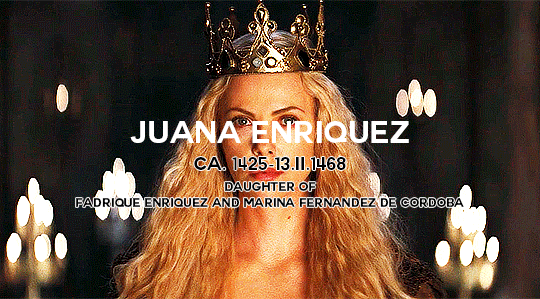


UNDERRATED RELATIONSHIP/PARTNERSHIP/FRIENDSHIP MEME 7/?: my pick: Juana Enríquez & Juan II of Aragon
The marriage of Juana Enríquez and don Juan of Aragon and Navarre was a political union, derived from a simple political expedience: the necessity to tight the bond between the adversaries of powerful don Álvaro de Luna (who, in fact, ruled in Castile), since he had gotten back in John II of Castile’s good graces. Don Diego Gómez de Sandoval, count of Castro, acted as a go-between between the admiral of Castile (Fadrique Enríquez) and the king of Navarre (Juan of Aragon). Having arranged the marriage and having obtained the consent of Alfonso V of Aragon (Juan’s older brother whom he would eventually succeed), the future spouses got betrothed – they took each other’s hands – at Torrelobatón, on 1 September 1444, in the presence of the king and queen of Castile and the prince of Asturias (future Henry IV). The bridegroom was 46, the bride 19 years old. The age difference emphasized the political nature of the union. The wedding did not take place until 1447. There were two reasons behind this delay: firstly, Rome had to be approached for the dispensation, for there existed the fourth degree of consanguinity between the betrothed, and then, the disaster of the Battle of Olmedo (1445) happened, forcing don Juan of Aragon and don Fadrique to run off to Navarre. The bride, who was already known as queen consort of Navarre, found herself in the custody of John II of Castile, who had taken over Medina de Rioseco. She recovered her liberty on 1 May 1446, thanks to the intercession of future Henry IV, but on an express condition that the wedding with her betrothed would not be celebrated without the consent of the king of Castile. The fire in the village of Atienza, which was supposed to be a part of doña Juana’s dowry, caused another delay of the admiral's matchmaking plans. Finally, John II of Castile gave the desired permission, and the young Castilian woman could receive the wedding ring from the hands of her mature, Aragonese suitor, on 13 July 1447, at Calatayud. Then, the passionate affection stirred in the heart of the Aragonese infante that he bestowed upon his second wife during their married life. According to her contemporaries, doña Juana was a beautiful, intrepid and intelligent woman. She was "charming", according to her adversary, don Pedro of Portugal, although in the pejorative sense of this word: not a charming woman but a deceitful one. It was enough to win the love of her husband. He also showed her paternal affection, for she well could be his daughter. For don Juan she always was his 'little girl’, in the moments of intimate tenderness and in those of political drama.
- Jaime Vicens Vives, Historia crítica de la vida y reinado de Fernando II de Aragón
Although he relied on his lieutenants—Carles, his wife Juana Enríquez, and later their son Fernando—he was discerning and cautious. A complex and contradictory man who was loathe to share power, Juan was infamous both for his reluctance to work with the Catalan ruling elites and his shabby treatment of his son. Carles and Juan had a deeply problematic relationship owing to the father’s unwillingness to relinquish his claim to Navarre in favor of his son, and then disinheriting him in favor of his daughter Leonor, wife of Gaston de Foix. Tensions between father and son worsened when Juan married Juana in 1444, and many of the later political problems in the Crown of Aragon can be traced to personal problems in the royal family. Juan’s miserly attitude toward the Catalans and his son did not, however, extend to his second wife. He endowed Juana with similar powers to those possessed by Maria of Castile, and in many ways she was truly co-ruler with Juan. Throughout her marriage to Juan she was one of his closest advisers and most valuable allies, traveling with him throughout Navarre and the Aragonese realms. Juan relied on her intelligence and discretion, her prodigious familial, financial, and political connections in Castile, and her tenacious and formidable negotiating skills. In 1451 he appointed her Governor of Navarre with Carles, and the next year she gave birth to Fernando, both of which further deteriorated an already troublesome relationship. In 1458 Juan appointed Carles, then thirty-three years old, as Lieutenant General in Catalunya, where he proved to be enormously popular. Juan imprisoned him on trumped up charges of treason, and when he died of tuberculosis in September 1461, accusations of foul play surfaced, accusing not only Juan but also Juana of plotting against Carles in favor of her son, Fernando (1452-1514, later Fernando II of Aragón). But Juana was nothing if not intrepid and, no newcomer to politics, she shrugged off the personal attacks and succeeded Carles as Lieutenant General. She maintained an extensive court with separate chancery and treasurer, but without the judicial and legislative offices that Maria of Castile possessed in parallel with Alfonso’s Neapolitan court. Amid the turbulence and widespread civil unrest that erupted in the wake of Carles’s death, she suppressed opposition in the towns and countryside and secured support for her husband and Fernando. In June 1461, she negotiated on behalf of the Crown to moderate the anti-royalist Capitulations of Vilafranca del Penedés. Like her sister-in-law before her, Juana sided with the remenees, a position that made her highly unpopular with the city magistrates of Barcelona and the landlords. Unlike the six Aragonese queen-lieutenants who preceded her, Juana is noted for her active involvement in military actions, notably the early campaigns of the ten-year civil war. In June 1462, she and Fernando fled from forces led by the rebellious Count of Pallars and took refuge in a royal castle in Girona only to find themselves besieged for a month. She organized the defense of the castle and held the rebels at bay until Juan and Louis XI of France arrived with military support. Although not personally at the head of an army, she was a tough negotiator who rallied and helped organize and provision an array of forces in defense of the Crown in the Ampurdán, accompanied forces to Barcelona and into Aragón. She was a key negotiator in the treaties of Sauveterre and Bayonne in May 1462 that settled the succession of Navarre and allowed the French to occupy the territories of Rousillon and Cerdanya to France in return for military support. She was virtually prisoner, with her daughter Juana, in the castle of Lárraga in 1463. Hostilities worsened, the French, Castilians, and Portuguese intervened, and periodically the Catalans ‘deposed’ (most notably in 1462) Juan, Fernando (occasionally), and Juana. Her inclusion in this list, although a dubious honor, is a clear indication of her power and importance in the political sphere. After her release from Lárraga and as the civil war intensified, she turned her attentions to governing Crown realms as Lieutenant General from 1464 until her death in 1468. With Fernando at her side, and seeking to pacify the warring factions, she presided over the Cortes of Aragón that met in Zaragoza from 1466 to 1468. During this period, she traveled extensively throughout the realms in the midst of civil war, gathering troops and supplies, negotiating with military leaders while personally attending to the business of governing—collecting taxes, holding courts of justice, dealing with the church, managing Crown lands and her own patrimony. The war outlived her by four years, but it is fitting that her indefatigable work as co-ruler with her husband and as tutor to her son mark her as the last queen-lieutenant of the Crown of Aragon.
- Theresa Earenfight, Queenship and Political Power in Medieval and Early Modern Spain
#UNDERRATED RELATIONSHIP/PARTNERSHIP/FRIENDSHIP MEME#perioddramaedit#historyedit#women in history#men in history#juana enríquez#john ii of aragon#charlize theron#robert pugh
119 notes
·
View notes
Note
For your underrated couples in history idea might I suggest Genghis Khan and Börte (she was in charge of managing crucial part of his vast empire when he was in campaign and he limited the succession to their sons despite having several other wives he cherished and Jochi's paternity being disputed), Kublai Khan and Chabi Khatun, and Mandukhai Khatun and Dayan Khan?
Sure! In fact, Kublai Khan and Chabi Khatun are next on my list. ;)
12 notes
·
View notes
Note
Ruby Lal has a really fantastic biography of Nur Jahan, and there are a lot of articles/summaries related to that which cover the high points of her life (and have links to other sources). For SJ/MM, a lot of books covering the history of the Taj Mahal are also useful, as are the contemporary chronicles from the reign
Ok, thank you very much!
2 notes
·
View notes
Note
Idea for couple: Rodrigo Díaz de Vivar (El Cid) and his wife Jimena
Ok, I will include them.
1 note
·
View note